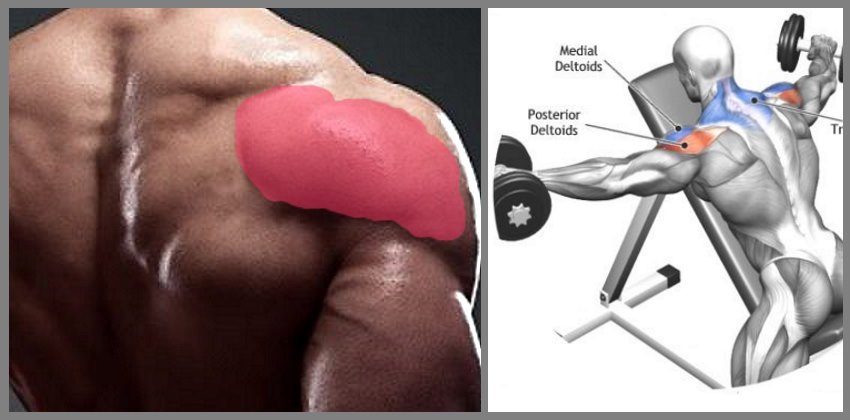Incorporating heavy presses, upright rows and lateral raises in your shoulder routine will help you get massive shoulders because all those exercises are great exercises for your shoulders. But what about your rear deltoids ? Leaving them under-developed, you risk a shoulder complex imbalance and an increased risk of shoulder injuries.
The rear deltoid acts more like a back muscle actually. Its main three functions are horizontal abduction (think rear lateral raises), external rotation of the upper arm ans well as extension of the upper arm.
Well developed rear delts will help in keeping your shoulders balanced and straight, they will prevent rounding of the shoulders (which happens because the front delt overpowers the rear delts from lots of pressing movements – bench presses, overhead presses, etc.) and help in preventing many shoulder injuries and rotator cuff problems.
Strong rear delts will also help to improve your strength in exercises such as the bench press. With a strong well developed upper back you will be able to generate way more power.
One exercise that works the rear delts really good is the lying rear lateral raise:
STARTING POSITION
– Lay down with your chest on a slightly inclined bench (it should be inclined about 15-20 degrees).
– Pick a dumbbell in each hand, let the arms hang down and place the hands so that they are facing each other.
REAR LATERAL RAISE MOVEMENT
With your elbows slightly bent, raise the arms to the sides until your elbows are at shoulder height and your arms are almost parallel to the floor. Hold for a second and return to the starting position. Exhale on your way up (the hardest part of the movement) and inhale on your way down.
GOAL
This exercise works your rear deltoids and partially your traps.
TIPS
– Pick a light weight when performing the exercise. The exercise works the best when performed with light loads and higher number of repetitions (15-20)
– Contract the abs during the motion.
REAR LATERAL RAISE COMMON MISTAKES
The lying position helps to limit cheating and ease the pressure on your spine. Picking up weights that are too heavy for you will make your back work instead your rear shoulders.
